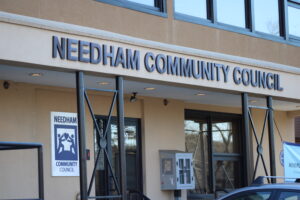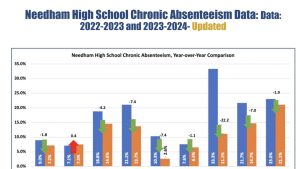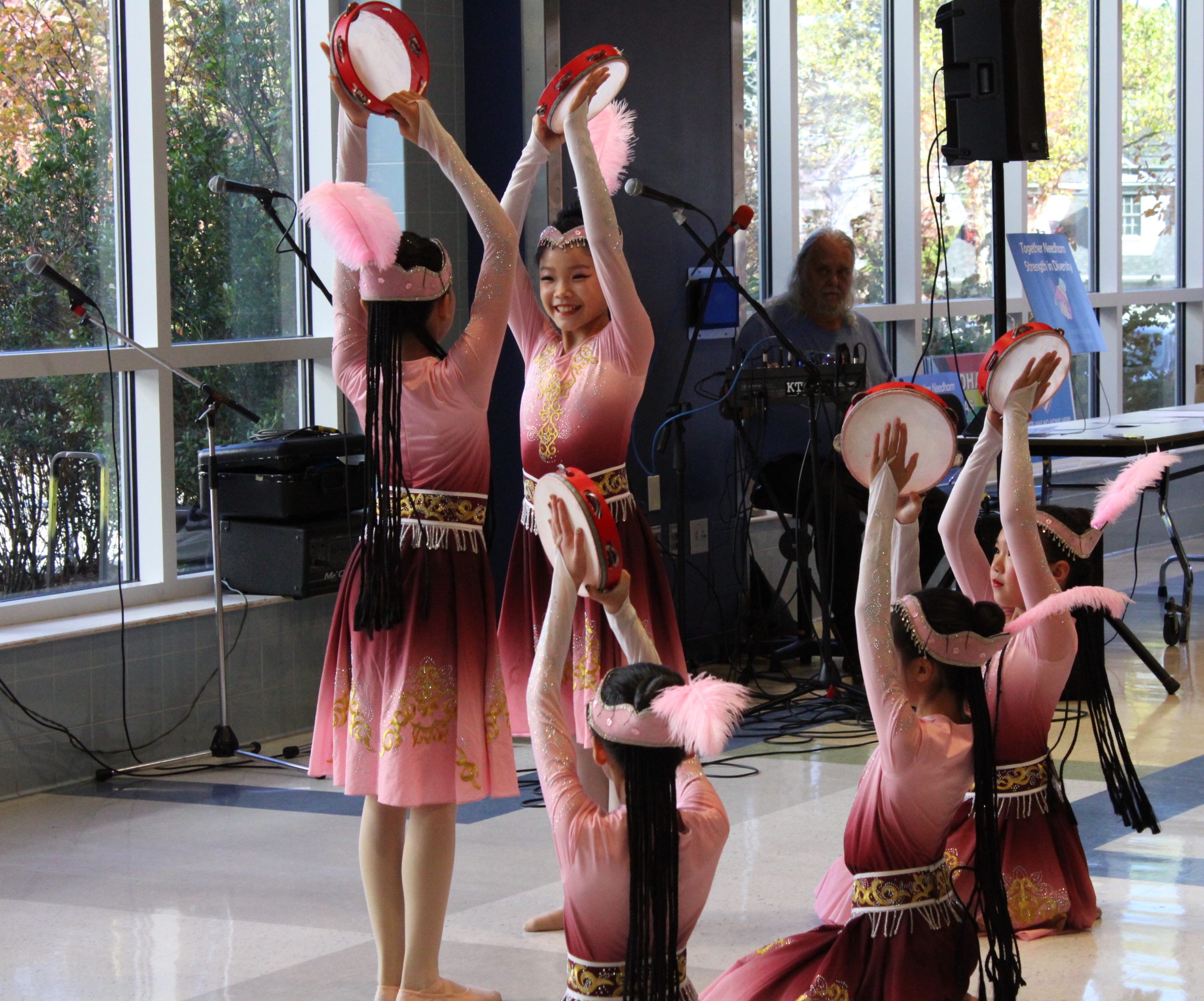
‘Breaking Bread,’ Celebrating Difference at Multicultural Festival
October 21, 2024
• On Sunday, Needhamites didn’t have to travel far to explore China’s Forbidden City, try Korean Choco Pies, hear Native American music or practice their Gaelic.
Needham’s Multicultural Festival welcomed close to 15 countries and nations to Needham High School, where attendees learned about and celebrated different cultures, cuisines and customs, often from other Needham residents. National flags lined the ceiling of the cafeteria, and participants performed traditional songs and dances.
The festival — a collaboration between the Needham Diversity Initiative and the Needham Human Rights Committee — aimed to bring all of Needham together, program coordinator Bala Venkat said. While educational, the festival is also an opportunity to unite, Venkat said.
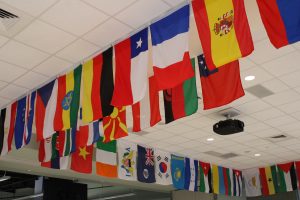
“We are one Needham,” Venkat said, “and with this cultural festival, we hope to educate everyone of the different cultures here in Needham and also showcase some of our talent in Needham through our performances.”
The inaugural festival last year garnered more than 700 attendees at Town Hall, Venkat said.
When Keith LaFace attended with his children last year, the experience inspired him to get involved with the Human Rights Committee, of which he is now co-chair. LaFace also chaired the festival working group, helping to organize the effort alongside its partners.
LaFace traces his roots back to Italy, from which his father emigrated at 9 years old, and Syria, where his grandfather was from. LaFace manned both countries’ tables at the festival but expressed his excitement at exploring other nations, just as he did with his children at last year’s festival.
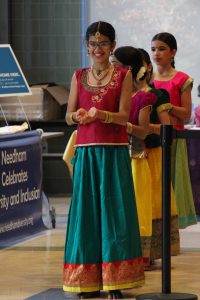
“When I start to dive into some of these culture tables, how they feel about family, how they feel about culture and their food,” LaFace said, “the differences are unique, but I truly do find we have so much more in common.”
Young Indian-American and Chinese-American dancers shared their traditional routines, as did Irish step dancers. Members of the Natick Praying Indians sang and played a deerskin drum and a maraca made of deer antler with seeds.
White Dove of the Natick Praying Indians explained the drum is the “heartbeat of the people” and “considered a living member of the tribe.” She also danced in a circle, a practice to honor the creator and represent the circle of life.
While Needham’s reputation as a white, affluent community precedes it, NHS Principal Aaron Sicotte pointed to the diversity within the town. The festival, in part, works to elevate that diversity, he said.
“That is a part of Needham, but if that’s all you’re focusing on, and I really think you’re missing the depth and the richness of the communities that are represented here in this one community,” Sicotte said. “There are so many backgrounds and heritages and languages spoken within this community.”
Gabi Gutierrez and her husband were born in Argentina, moving to Washington state before settling in Needham. People stopped by her table to try cookies, dulce de leche and mate cocido, a type of infused tea.
The family took a trip to Argentina this past summer to visit relatives, and it was the first time Gutierrez’s child Sal Caceres traveled there in 16 years. As Gutierrez’s kids have grown up, they’ve been drawn to learn Spanish.
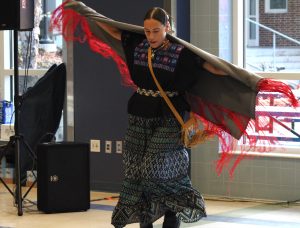
As folks stopped by the table, Caceres stamped the festival’s makeshift “passports.” Both Caceres and Gutierrez enjoyed sharing their culture.
“It’s nice for people who maybe haven’t traveled or have always been here to know that there are other countries and that people are mostly the same everywhere,” Gutierrez said. “We’re not so different.”
“Some people know things like [Lionel] Messi and tango,” Caceres added, “so it’s fun to see what people know and what they don’t know.”
Zufash Khan was born in Pakistan, where much of her family lives, but continues to stay connected to the country. At home, the Khan family speaks Pashto, which is spoken by about 20% of Pakistanis. The Khans also occasionally visit Pakistan.
Pakistan is known for its hospitality and handicrafts, Khan said, with most of their cultural items — clothing, cutlery, dishes — are handmade. Khan wore shalwar kameez, a combination tunic and pant, and henna, also known as mehndi, on her hands.

Reintroducing Pakistan to her neighbors felt significant for Khan.
“It gives them a different view versus what they hear from the news,” she said, “and it gives them more perspective of how the people are, how the culture is.”
Venkat wore an Indian flag pin on her saree, a traditional wrapped garment, and the Dahn kids — Hannah, 13, and Noah, 11 — donned a hanbok, which is worn during celebrations for the Lunar New Year. Their dog Coco, who they adopted from Korea, also wore her own hanbok.
The Dahns visit Korea for two months every summer summer, where they visit their mother’s side of the family and “eat a lot of spicy food,” Hannah said. Galbi, Korean barbecue short ribs, is one of her favorite meals, she said.
South Korea is about the size of Indiana but is about 10 times the population.
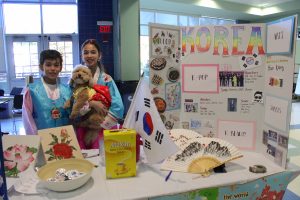
“It’s nice to share it with people that don’t really know a lot about Korea,” Noah said.
After spending time abroad in China and Europe, the Multicultural Festival returned lots of memories for Greg Dunn, a member of the Human Rights Committee and part of the organizing committee.
While many cultures appear foreign or vastly different, they’re all bound by central commonalities: love for family, connection and, of course, food.
“Sharing food and breaking bread with people, I think really brings them together,” Dunn said. “It makes people understand that we’re really similar in so many more ways than we think.”
